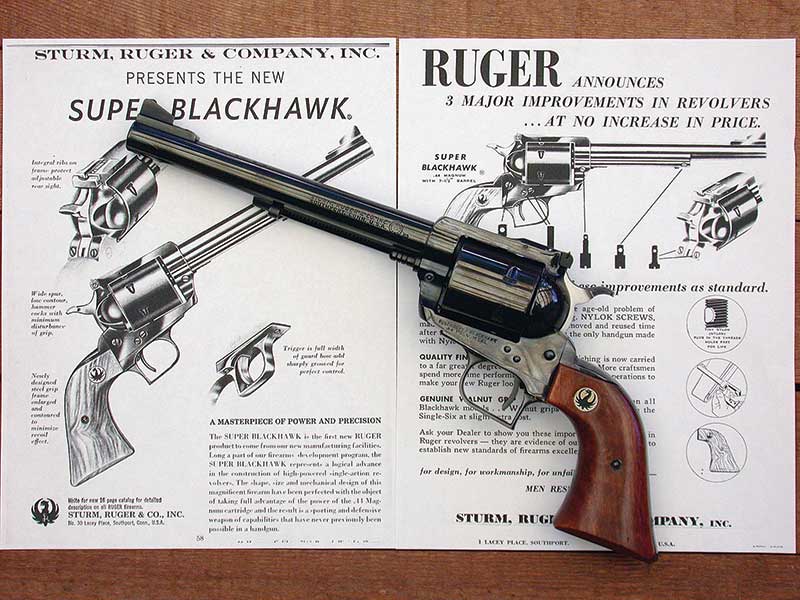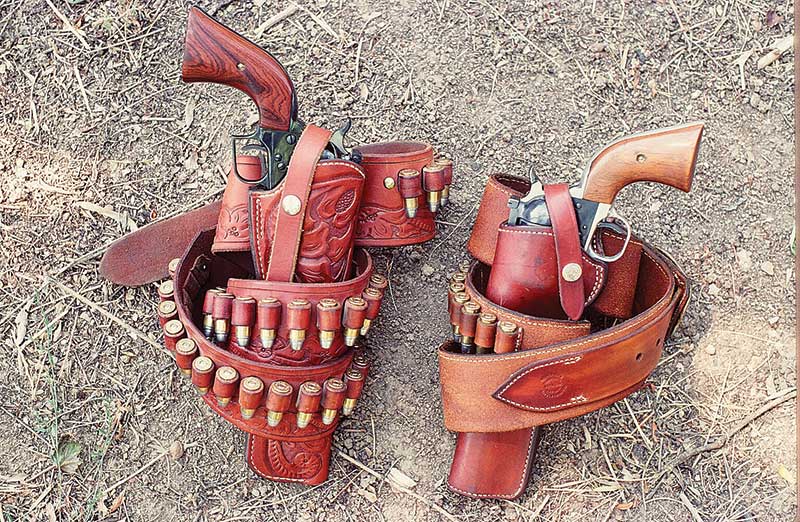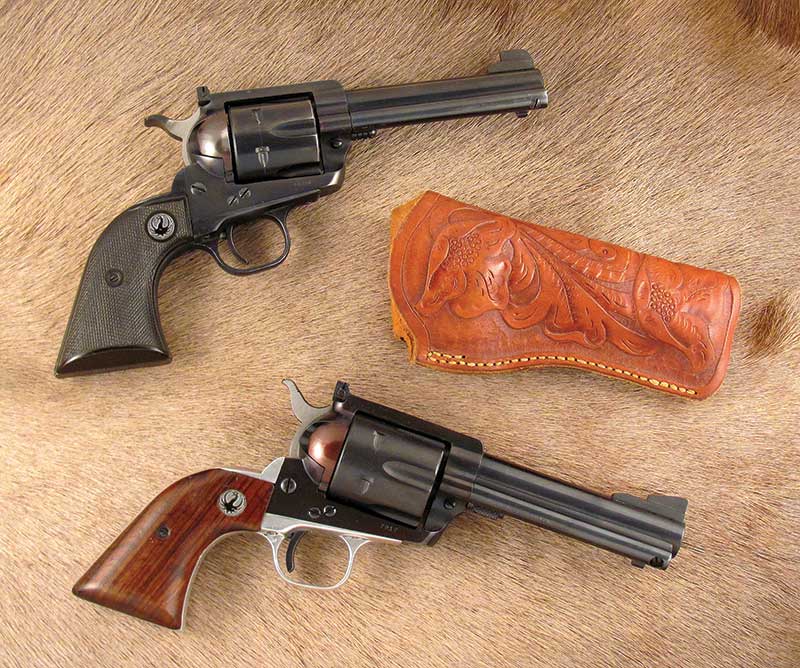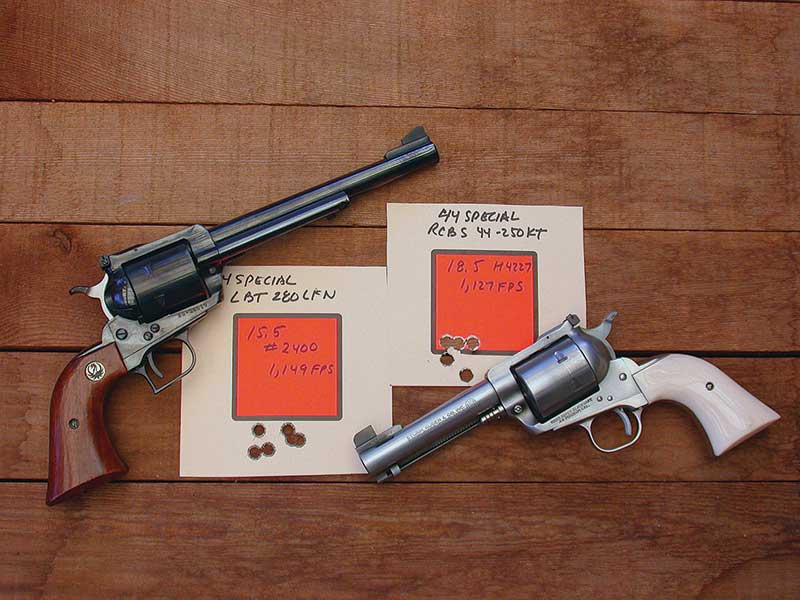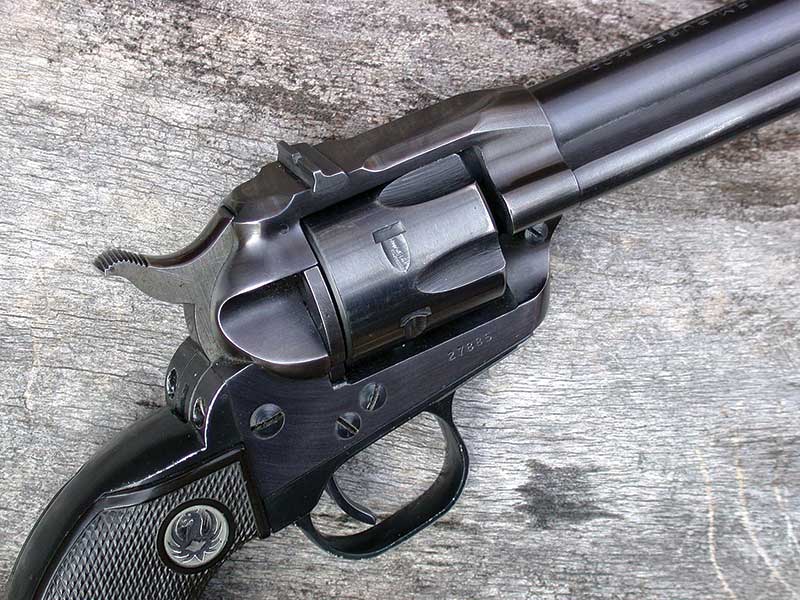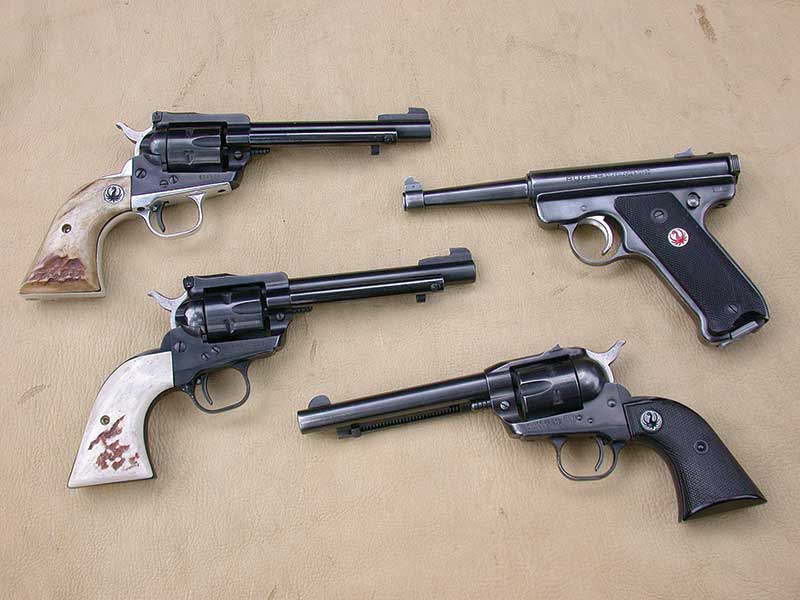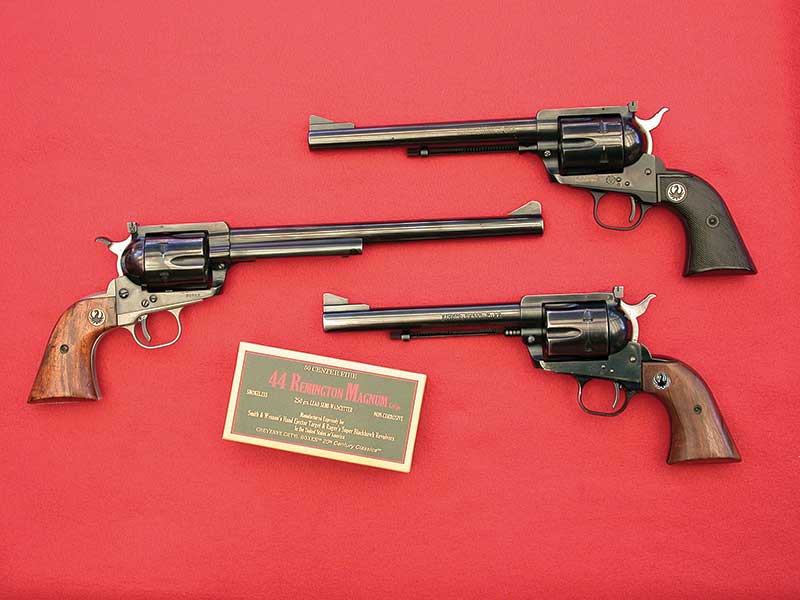The .357 Blackhawk
The .22 was such an immediate success that Ruger turned his thoughts to a centerfire version. In 1955, the first Blackhawk emerged. What a sixgun this was! That first Blackhawk had the same grip frame and coil spring operation as the Single-Six .22, but Bill went back to the Colt Single Action frame and cylinder size. Unlike the Colt with its traditional sights, Ruger flat-topped the frame, added a Micro adjustable rear sight mated up with a ramp-style front sight, chambered it in the most powerful sixgun cartridge of the day — the .357 Magnum — and the ideal outdoorsman’s single-action revolver emerged. With its 45/8" barrel length it was, and still is, a top candidate for the title of Perfect Packin’ Pistol.
My first Ruger .357 Blackhawk, which is now known affectionately by sixgunners and collectors alike as the Flat-Top, was purchased in late 1956 or so. At the time, it was pretty impossible to find .357 Magnum brass, and jacketed bullets were virtually unheard of. That was the bad news; the good news was .38 Special brass was in abundant supply and Lyman offered the Elmer Keith designed, 168-grain #358429 bullet mold.
I bought a Lyman #310 Tool, a single-cavity #358429 mold, small, cast-iron pot and I was in the ammunition making business. Thousands of rounds of .38 Specials were slowly assembled using the Keith bullet over 13.5 grains of #2400. That load is hotter than many .357 Magnum loads offered today, though it was no problem for the .357 Blackhawk. It’s hard for me to assess which Ruger, the .22 Single-Six or the .357 Flat-Top, had the greatest effect on my sixgunning life, so I’ll call it a tie. Both have been staple items in the Taffin Family for more than half a century.

